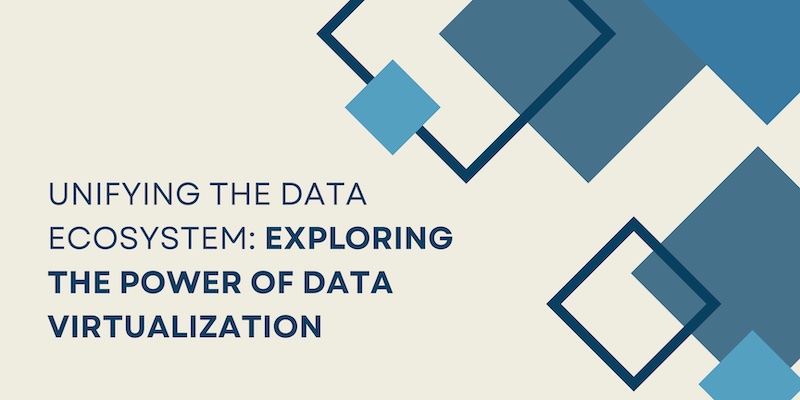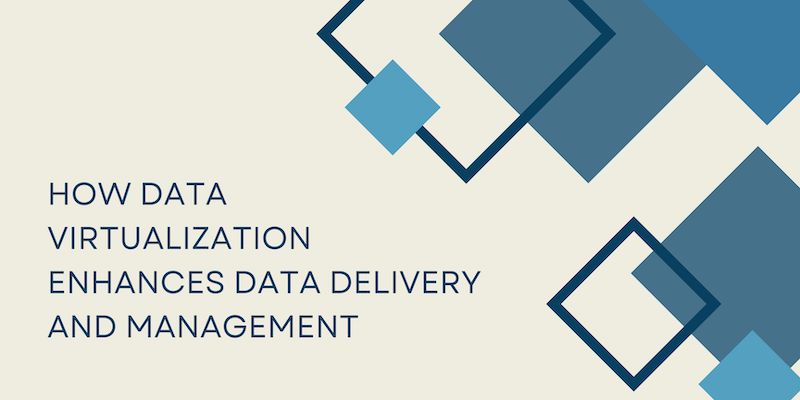
In today's data-driven world, organizations face increasing challenges. This includes managing and delivering data from a wide variety of sources. Data virtualization is a technology that offers a solution to these challenges. It is done by providing a unified view of data across the enterprise.
Let's explore how data virtualization enhances data delivery and management in this article. Join us as we go into the world of data virtualization. Let’s discover its potential to transform the way organizations manage and use their data.
How Data Virtualization Enhances Data Delivery and Management

1. Better Customer Insights
Data virtualization provides better customer insights. This is done by allowing organizations to access and analyze customer data from various sources. It will provide a more complete view of customer behavior and preferences. This enables organizations to personalize their offerings.
Dynamic data masking and other types of data masking methods can help protect sensitive customer data. It can be done while still allowing organizations to get insights from it.
2. Simplified Data Management
Data virtualization can make it easier for you to manage data. It does this by providing a single interface. This will allow users to access and manipulate data from different sources.
It also eliminates the need to move data between systems. Eliminating this need will reduce the complexity of data management. Data masking solutions can be implemented to protect sensitive data. This is done while making it available to authorized users.
3. Increased Data Integration
Simplifying the process of integrating data can be done through data virtualization. This can be from various sources, reducing the time needed for data integration projects.
Doing this will then eliminate the need for complex ETL processes, making data integration more agile.
4. Improved Data Quality
Data virtualization improves data quality. This is done by providing a single view of data that eliminates duplicates and inconsistencies. This ensures that users are working with accurate and reliable data.
Data masking methods such as static data masking can be used to ensure data quality. It is done by masking sensitive data during testing and development.
5. Faster Data Delivery
Allowing users to access data in real-time or near real-time will enable faster data delivery. It will eliminate the need to wait for data to be moved between systems. This will then reduce data latency. Data obfuscation can be used to protect sensitive data during data delivery.
6. Cost Savings
Data virtualization reduces the costs associated with data management. This is by eliminating the need for additional infrastructure and resources. It also reduces the time and resources required for data integration projects.
Data masking companies provide cost-effective solutions for data masking and data obfuscation.
7. Agile Analytics
Data virtualization allows for agile analytics. This is where analysts can quickly access and manipulate data from various sources. It is used to gain insight and make informed decisions. It also enables users to work with the latest data, which provides a competitive advantage.
Data masking best practices should be implemented. This will ensure the security of sensitive data during analytics.
8. Increased Data Security
Data virtualization provides a layer of security. This is by allowing organizations to control who has access to specific data sources. It also controls what actions they can perform on the data. It will ensure compliance with data regulations. It will also prevent unauthorized access to sensitive data.
Data masking policies can be enforced to ensure compliance with data regulations.
9. Better Governance
It can provide better governance by allowing organizations to monitor data usage. Data virtualization will also enforce data policies across various data sources. It will enable users to work within the guidelines of the organization. This will ensure consistency and compliance.
Data masking tools can be used to enforce data policies and monitor data usage.
10. Reduced IT Complexity
Eliminating the need for complex ETL processes will reduce IT complexity. It will also reduce the number of data silos and the dependency on IT for data access. It will allow users to access data on their terms without the need for specialized IT skills.
Data masking software can be used to reduce the complexity of data access while ensuring data security.
11. Improved Collaboration
Allowing teams to access and work with the same data will promote collaboration, regardless of where it is stored. Data virtualization increases productivity and reduces errors. This is by providing a single source of truth for data.
Test data management and data masking can be used to ensure collaboration. This is done without compromising the security of sensitive data.
12. Enhanced Business Agility
Data virtualization enhances business agility. This is done by providing organizations with the ability to quickly respond to changing business requirements. It also allows them to adapt to new data sources. It helps organizations make data-driven decisions faster, which increases their competitiveness.
Data masking techniques can be used to ensure that sensitive data is protected during business agility initiatives.
13. Efficient Data Processing
Allowing organizations to process data in real-time or near real-time will improve data processing. It will reduce delays in data processing, which enables organizations to act on insights faster.
Data masking techniques and solutions can further improve efficiency. This allows organizations to obfuscate or mask sensitive data in real-time. This will reduce the risk of unauthorized access or data breaches.
14. Improved ROI
Data virtualization provides a high return on investment. Reducing costs associated with data management and improving data quality will result in a higher ROI. Enabling faster and more efficient data-driven decision-making can also result in a higher ROI.
This will enable organizations to make better use of their data while increasing their revenue and profitability. Data masking software and tools can further improve ROI by enabling organizations to implement data masking policies and solutions.
15. Increased Data Accessibility
Allowing users to access data from various sources through a unified interface will increase data accessibility. It can make it easier to work with the data they need, increasing productivity.
Static data masking can improve data accessibility by allowing organizations to provide non-sensitive test data to developers and testers. It will enable them to work more efficiently.
16. Scalability
Data virtualization is highly scalable. It allows organizations to handle large volumes of data, whether from various sources or not, without needing additional resources. It also enables organizations to scale their data processing capabilities without adding complexity.
Data masking companies can provide scalable solutions for data obfuscation and masking. This will enable organizations to protect sensitive data at scale.
17. Faster Time-to-Insight
Eliminating the need for data preparation and movement between systems will enable faster time-to-insight. It also enables users to quickly access and analyze data from various sources. This will enable faster and more informed decision-making.
Data masking best practices can further improve time-to-insight. This enables organizations to mask sensitive data on the fly. It will reduce the time required for data preparation.
18. Better Business Intelligence
Allowing organizations to access and analyze data from various sources will provide better business intelligence. It provides a more complete view of the business. This enables organizations to make data-driven decisions and identify new business opportunities.
Test data management and data masking can further improve business intelligence. It is done by enabling organizations to use real data. This is to test and refine their business strategies.
Summary
Data virtualization provides a powerful solution for organizations. It helps them effectively manage and deliver data from a wide variety of sources. It offers a unified view of data across the enterprise.
It also has the potential to transform the way organizations manage and use their data. Data virtualization enables organizations to make data-driven decisions faster. It also enables organizations to increase competitiveness and improve profitability.
By leveraging the power of data virtualization, organizations can gain a competitive edge and achieve long-term success.
Related Posts
Share this post
Leave a comment
All comments are moderated. Spammy and bot submitted comments are deleted. Please submit the comments that are helpful to others, and we'll approve your comments. A comment that includes outbound link will only be approved if the content is relevant to the topic, and has some value to our readers.


Comments (0)
No comment